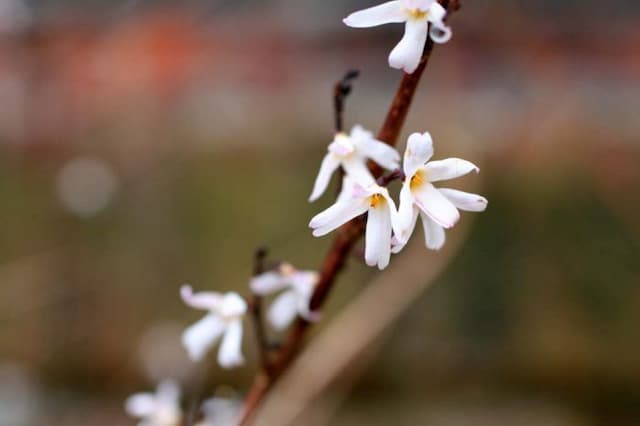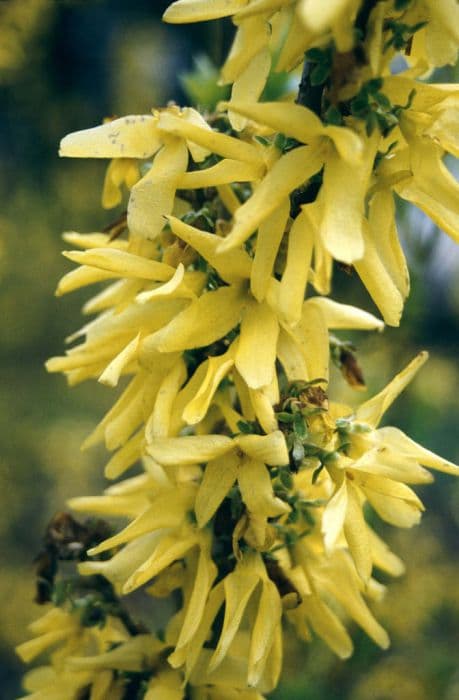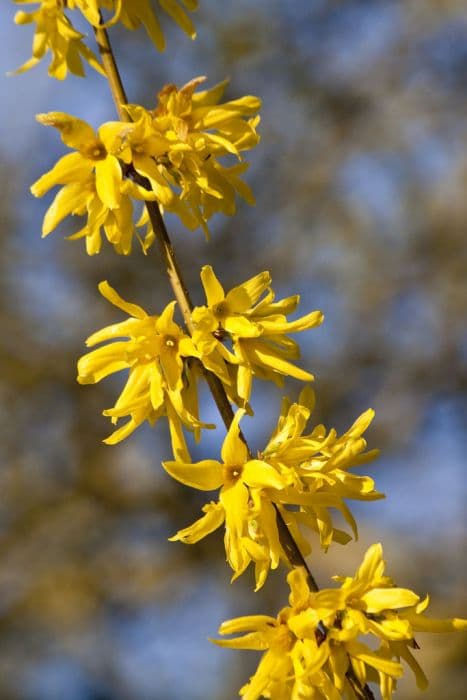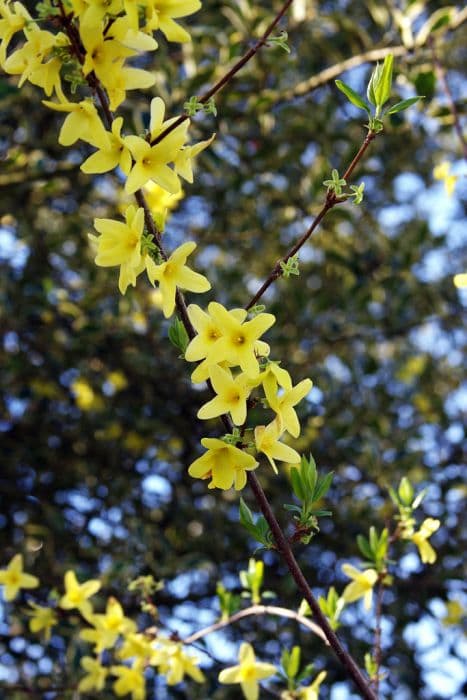Josée Lilac Syringa Josée = 'Morjos 060f'
![lilac [Josée]](/_next/image?url=https%3A%2F%2Fplants-admin.emdemapps.com%2Fimages%2Fplants%2F%2Fimages%2F604b5e49e4653.png&w=3840&q=75)
ABOUT
The Syringa Josée, commonly known as the Josée Lilac, is a captivating plant notable for its abundance of delicate blooms. The flowers of this lilac are a soft, pastel pink hue, which creates a gentle yet memorable visual impact. These blooms are organized in lovely clusters, known as panicles, giving the plant a lush, full appearance when in bloom. Its leaves are green, providing a beautiful backdrop that further accentuates the light pink flowers. Each individual leaf has a heart-like shape, adding to the overall charm of the plant. The leaves are arranged in opposite pairs along the stems, creating a neat and ordered look. The Josée Lilac's branches are arranged in a pleasing, rounded shape, coming off of the main trunk to support the foliage and blossoms. The bark of the plant is typically smooth with a grayish-brown color that contrasts subtly but nicely with the green of the leaves and the pink of the flowers. Overall, the appearance of the Josée Lilac is one of softness and beauty, with its lovely pastel blooms and heart-shaped leaves creating an enchanting display that is cherished in gardens where it is planted. Its visual charm is enhanced when the clusters of fragrant flowers are in full bloom, attracting the gaze of onlookers and the visitation of pollinators like butterflies and bees.
About this plant
 Names
NamesFamily
Oleaceae
Synonyms
Dwarf Korean Lilac, Josée Reblooming Lilac
Common names
Syringa Josée 'Morjos 060f'.
 Toxicity
ToxicityTo humans
The Syringa Josée, commonly known as the lilac, is not considered highly toxic to humans. However, if ingested in large quantities, parts of the plant could potentially cause stomach upset, with symptoms like nausea, vomiting, and diarrhea. It is generally recommended to avoid eating plants that are not known to be edible, especially in significant amounts, to prevent such gastrointestinal discomfort.
To pets
The lilac, or Syringa Josée, possesses low toxicity for pets such as dogs and cats. While it is unlikely to be harmful if a small amount is ingested, consumption of larger amounts of the plant could potentially lead to gastrointestinal upset in pets. Symptoms might include vomiting or diarrhea. As a precaution, it's best to keep an eye on pets and prevent them from consuming plants unnecessarily.
 Characteristics
CharacteristicsLife cycle
Perennials
Foliage type
Deciduous
Color of leaves
Green
Flower color
Pink
Height
6 feet (1.8 meters)
Spread
6 feet (1.8 meters)
Plant type
Shrub
Hardiness zones
3
Native area
Asia
Benefits
 General Benefits
General Benefits- Aesthetic Appeal: Adds vibrant color and texture to gardens and landscapes with its clusters of fragrant, lilac-pink flowers.
- Attracts Wildlife: Draws in butterflies and hummingbirds, which are attracted to the flowers' nectar.
- Compact Size: Smaller than some other lilac varieties, making it suitable for gardens with limited space.
- Extended Blooming: Has a longer blooming period compared to some other lilacs, providing color from spring to summer.
- Low Maintenance: Requires minimal care once established, making it a good choice for low-maintenance gardens.
- Hardiness: Tolerates cold climates well, making it suitable for growth in many northern regions.
- Drought Resistance: Once established, it requires less watering, enduring periods of low rainfall.
- Pruning Tolerance: Responds well to pruning, allowing gardeners to shape the plant and promote denser growth.
- Deer Resistance: Less appealing to deer, reducing the chances of damage in areas with deer populations.
- Deciduous Interest: Offers seasonal interest with its foliage that changes color in the fall before shedding.
 Medical Properties
Medical PropertiesThis plant is not used for medical purposes.
 Air-purifying Qualities
Air-purifying QualitiesThis plant is not specifically known for air purifying qualities.
 Other Uses
Other Uses- Lilac wood is hard and dense, making it suitable for engraving and fine woodworking, such as the crafting of musical instruments or intricate carvings.
- The flowers of the lilac can be used in perfumery; the fragrance is extracted to create sweet-smelling lilac perfumes and scented products.
- Dried lilac flowers can add a decorative touch to potpourris or homemade sachets which can provide a fresh, floral scent to drawers and closets.
- Lilac blooms can be pressed and used in the art of flower pressing, creating beautiful designs for bookmarks or framed artwork.
- Ink made from lilac blossoms can be used for writing and drawing, offering a unique hue and a faint floral scent to the ink.
- Floral water from lilacs is sometimes used in culinary dishes, providing a subtle floral flavor in desserts or fancy cocktails.
- The leaves of the lilac bush can be employed in natural dyeing processes, yielding various shades of green when used on textiles.
- Lilac branches can be used as natural garden stakes, offering support for climbing plants or vines due to their strength and durability.
- The bloomed flowers serve as an eco-friendly confetti alternative for outdoor celebrations, decomposing naturally and providing an aromatic experience.
- When planted as hedges, lilac bushes can provide privacy and wind protection due to their dense foliage and fast-growing nature.
Interesting Facts
 Feng Shui
Feng ShuiThe Lilac, which is the most common name for Syringa, is often used in Feng Shui for its sweet fragrance and the youthful energy it brings to a space. According to Feng Shui, placing lilacs in the southeast area of your home or garden can enhance the energy for wealth and prosperity. Moreover, due to their heart-shaped leaves, lilacs can also be positioned in the southwest to cultivate love and improve relationships.
 Zodiac Sign Compitability
Zodiac Sign CompitabilityThe Lilac is not used in astrology practice.
 Plant Symbolism
Plant Symbolism- Love: The Syringa, commonly known as lilac, is often associated with the emotions of love and affection, representing the fondness one person holds for another.
- Innocence: Lilacs are symbolic of youthful innocence and the joy of early life, often conveying a sense of purity.
- Renewal: As lilacs are among the first plants to bloom in spring, they symbolize rebirth and the renewal of life after the dormant winter months.
- Beauty: With their lush, fragrant blossoms, lilacs are often tied to the concept of natural beauty and the aesthetic pleasure derived from the blooming plant.
- Nostalgia: The scent of lilacs can evoke memories and a sense of nostalgia, as they are commonly found in gardens and have been celebrated in literature and poetry through the ages.
- Passion: In some contexts, the intense fragrance and rich colors of lilacs can also represent the depths of passion in human emotions.
 Water
WaterThe Dwarf Korean Lilac, commonly known as the Syringa Josée, should be watered deeply to encourage root development when the top inch of soil feels dry to the touch. This usually equates to about 1 inch of water per week, either from rainfall or by manual watering. During the growing season, this could mean watering with approximately 0.625 gallons per square foot every week, adjusting as necessary for rainfall. Established plants are somewhat drought tolerant and may require less frequent watering. In hot, dry periods, increase watering to prevent stress, but always allow the soil to dry slightly between watering to prevent overwatering and root rot.
 Light
LightThe ideal light conditions for a Dwarf Korean Lilac require full sun to partial shade, with a preference for at least six hours of direct sunlight daily. The best spot for this plant is an area that receives morning sunlight and dappled shade in the afternoon, as intense afternoon sun can sometimes be too harsh, especially in hotter climates.
 Temperature
TemperatureDwarf Korean Lilacs thrive in a wide range of temperatures but perform best between 60°F and 75°F. They can tolerate winter chill down to -30°F and summer heat up to around 95°F. To promote strong growth and flowering, avoid placing the plant in spots where temperatures frequently drop below the hardiness threshold or above the heat tolerance level.
 Pruning
PruningPruning the Dwarf Korean Lilac is essential to maintain its shape, remove dead or diseased wood, and promote better flowering. The best time to prune is right after the blooms have faded in late spring. This is because lilacs set next year's flower buds shortly after blooming, and late pruning can remove these buds, reducing the flowering the following year. Remove spent flower clusters and annually thin out about a third of the oldest stems to stimulate new growth and rejuvenate the plant.
 Cleaning
CleaningAs needed
 Soil
SoilThe dwarf lilac 'Josée' thrives best in well-draining, fertile loam with a neutral to slightly alkaline pH, ideally between 6.5 to 7.5. A mix of garden soil, compost, and perlite or sand can provide the essential drainage and nutrients.
 Repotting
RepottingDwarf lilacs like 'Josée' typically do not require frequent repotting and can be repotted every few years as they outgrow their containers or when soil is depleted.
 Humidity & Misting
Humidity & Misting'Josée' lilacs prefer moderate humidity levels but are adaptable and can tolerate the humidity levels typically found in most temperate climates without issue.
 Suitable locations
Suitable locationsIndoor
Ensure bright light and cool temperatures for 'Josée' lilacs indoors.
Outdoor
Plant 'Josée' lilacs in sun to partial shade with good air flow.
Hardiness zone
3-7 USDA
 Life cycle
Life cycleThe Syringa Josée, commonly known as the Josée reblooming lilac, begins its life as a dormant bare-root plant or potted specimen that is planted in fertile, well-draining soil during spring or fall. Upon planting, the root system establishes itself and sends up shoots to produce a sturdy framework of branches which, in the following spring, become covered in fragrant, pink to mauve flowers. After the initial spring blooming, the Josée lilac enters a vegetative growth phase during summer where it develops new foliage and gains height and width. This lilac variety may bloom again in late summer or early fall, offering a second display of flowers, which is unusual for lilacs. In autumn, the leaves may turn yellow before falling as the plant enters dormancy to conserve energy for the winter. Finally, as temperatures rise in the following spring, the cycle repeats with a new flush of blossoms and vegetative growth.
 Propogation
PropogationPropogation time
Spring to summer
The Syringa Josée, commonly known as the Josée lilac, is typically propagated through softwood cuttings. This is a widely accepted method for many woody ornamentals and is often done in late spring to early summer when the new growth is still green and flexible but not too tender. The process begins by selecting healthy, disease-free new growth. The cuttings should be about 4 to 6 inches long and include several leaves. The lower leaves are removed, and the cut end is dipped in a rooting hormone to encourage root development. The prepared cuttings are then inserted into a well-draining potting mix and kept moist, in a bright location but out of direct sunlight. With proper care, roots should form within 4 to 8 weeks, after which the new Josée lilac can be gradually acclimated to outdoor conditions before planting in the garden.








